Blue
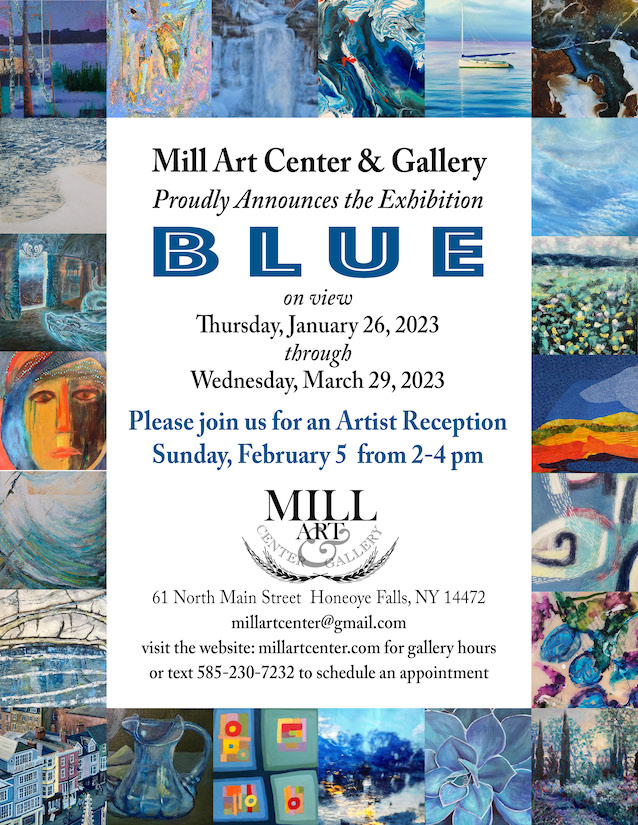
Reception on Feb. 5 for the member’s show at Mill Art Center in Honeoye Falls. My friends Jean and Bill Stephens and many others will be exhibiting work. It’s another great place to find interesting work from regional artists.
the painting life

Reception on Feb. 5 for the member’s show at Mill Art Center in Honeoye Falls. My friends Jean and Bill Stephens and many others will be exhibiting work. It’s another great place to find interesting work from regional artists.
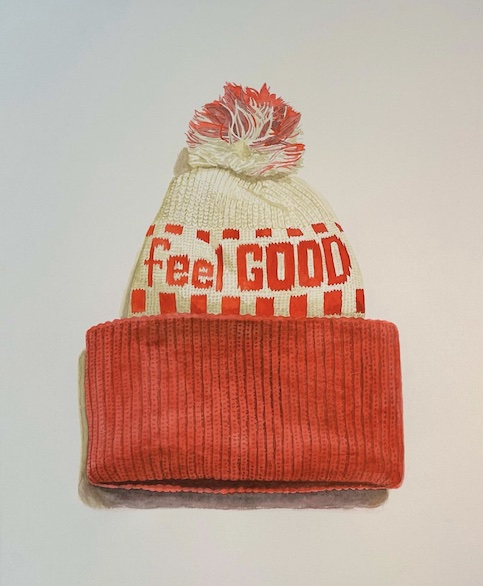
Stocking Cap, Joshua Huyser
Another wonderful painting by Joshua Huyser, from Instagram.
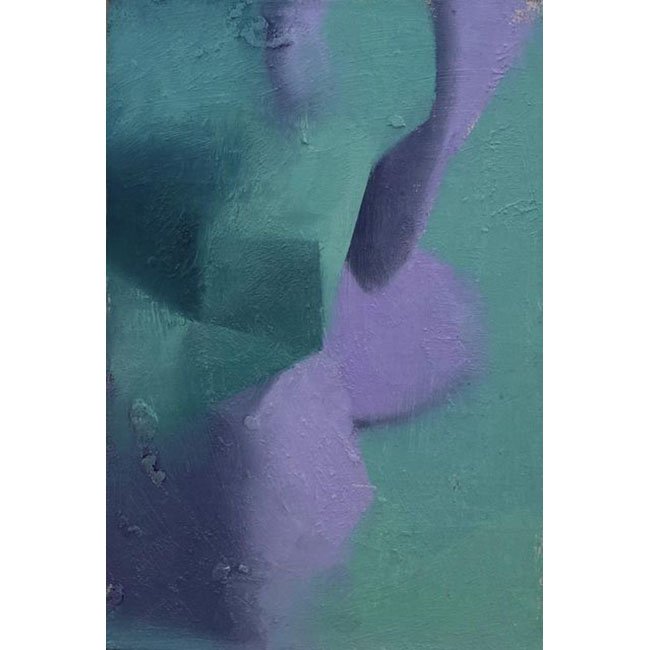
Still Life in Turquoise, Mika Salamon
I’m fascinated by painters associated with the Jerusalem Studio School who are taking perceptual painting in a lush, sensuous direction, with a luxuriant sense of color. I’m loving what they do with limited but rich palettes. Salamon’s work takes that esthetic to an extreme simplicity.
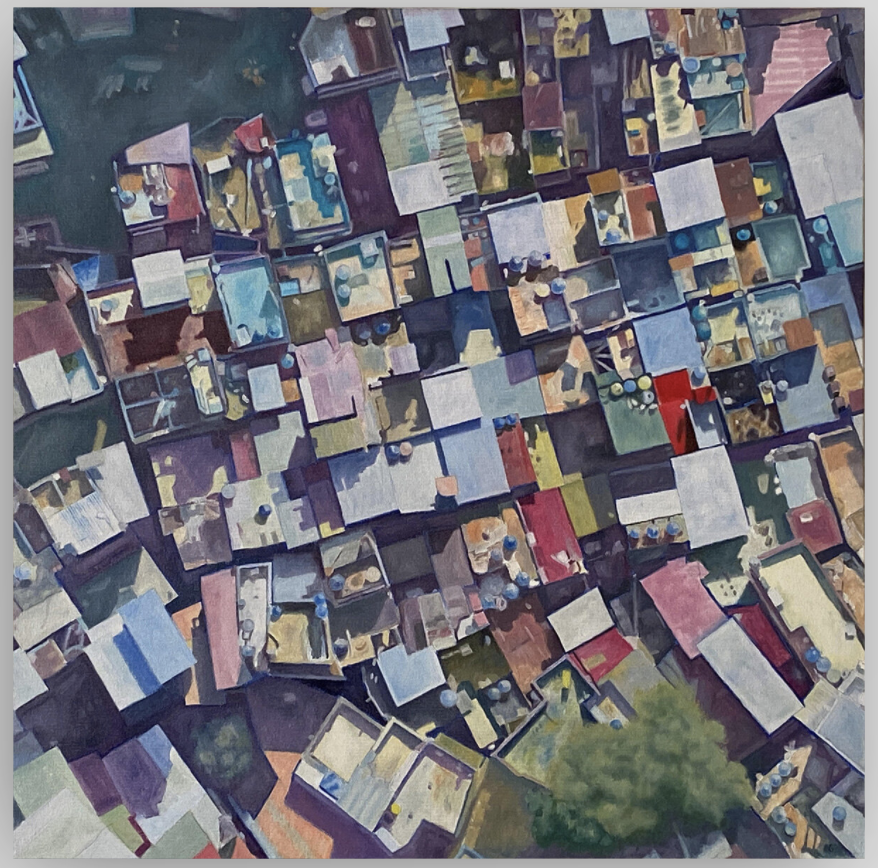
“Rocinha Series 3 No 1”, Alan Garry, 32 x 32, Oil and graphite on canvas
Before I get to my impressions of the juried show currently on view at Viridian Artists, allow me a digression about the location depicted above in one of the exhibition’s paintings.
On a visit to Fiji, my son reported back to me that he found there the poorest and happiest people he’d ever met. I was reminded of that brief report (which included first-person details about indigenous volleyball) when I looked up Rocinha, a famous, densely-populated favela that evolved organically and spontaneously near Rio de Janeiro. It’s occupied by those who can’t afford to live in the more expensive, planned urban areas of the city. It’s a borough scaled for human beings, growing and developing virtually without urban regulation or oversight, with a self-organized, makeshift structure, improvised and wildly colorful. It’s a libertarian’s nightmare that seems to be trying to grow into a libertarian’s dream. The population is packed into tight spaces, structures rarely rising beyond three floors. Nothing looms over anything else there except the upper reaches of the steep hillside on which everything higher up is the same size as everything lower down.
Close to a quarter million people now live in Rocinha, and they get around mostly by foot on a few roads and alleys and paths that snake through the place. As Rio has grown, it has enveloped this encampment that has been crystallizing into a suburban town, now that it’s centrally located. (In a way, the economic mountain came to Mohammad and surrounded him.) It is becoming more modernized so that almost all structures now have plumbing, electricity and sanitation.
From Wikipedia:
Compared to simple shanty towns or slums, Rocinha has a better developed infrastructure and hundreds of businesses such as banks, medicine stores, bus routes, cable television, including locally based channel TV ROC (TV Rocinha), and, at one time, a McDonald’s franchise.[2] These factors help classify Rocinha as a favela bairro, or favela neighborhood.
It’s the urban equivalent of an outlaw entrepreneur, someone more interested in growth than legality. The name Rocinha means “little farm.” This mid-sized city sits on a hillside that has been the backdrop for various productions like Rio and Children of Men. As in Mexico, MORE
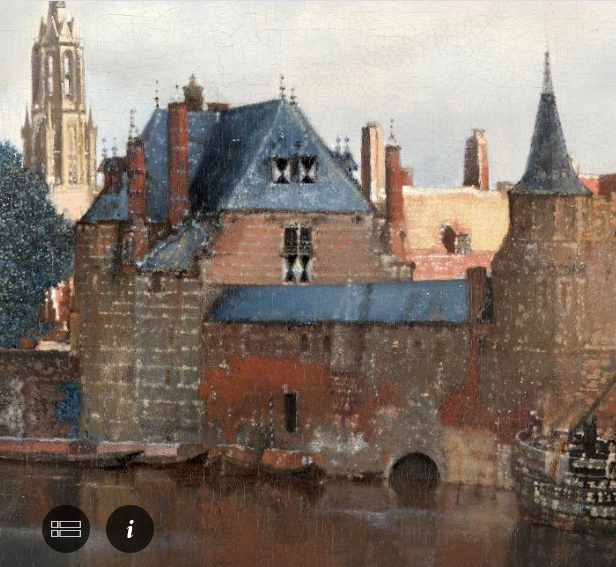
Detail, Vermeer’s View of Delft
The only work of art criticism I return to with relish and as a way of relearning what I already think I understand is In Search of Lost Time. Marcel Proust’s insights into how music, painting and fiction all are grounded in perception, rather than discursive thought, distinguish him from most people who have written about visual art. He understood an artist’s job isn’t to have something to say, so much as the challenge of learning how to see.
In Proust’s novel, on the cusp of death, the novelist Bergotte ventures out unsteadily to an exhibition of Vermeer’s View of Delft. What the fictional writer longs to see one last time is a small, innocuous area of the painting, a simple patch of yellow sunlight on a wall: it’s hardly more than a sensation to his old eyes, with no intellectual substance, no understandable relevance to his life. In that one little detail of Vermeer’s great painting, he recognizes a world of feeling and insight, an intense reality, a meek simplicity in the representation of a commonplace element of human experience that triggers a recognition of his life’s deepest reality. He dies a short time later with regret about having ignored and neglected the quality of this perception, this simple sensation, hidden in plain sight, throughout his entire writing career when his love for it could have been a lodestar for his own writing.
In Search of Lost Time’s narrator is luckier. Marcel has multiple moments quite like this one, and they are more consequential than Bergotte’s. He calls them instances of involuntary memory. They recur throughout the seven-volume novel intermittently until the last book when several in rapid sequence open his heart and finally, after wasting much of his adulthood in social and erotic struggles, he understands how and why to become a writer.
Vermeer’s little patch of yellow was a sort of perceptual synecdoche. In the book, its effect on Bergotte demonstrates the immediate and totalizing impact and power of visual art itself. One snatch of Mozart, or one glance at a Cezanne, and you can behold life’s wholeness, without needing to intellectually dissect what’s been disclosed. It’s immediately recognizable, but was inaccessible until one hears it or sees it. Phenomenologically, as an element of experience, Proust’s serendipitous moments aren’t metaphoric but sacramental in the same way: the fragment is the whole. They don’t signify, they embody. A morsel of experience contains the whole of experience, as in the old New Age holographic paradigm from David Bohm in the 80s, where every part of the world is the whole, in a sense, in a way analogous to the structure of a fractal or a Fibonacci sequence. Proust’s narrator doesn’t theorize about this, he experiences it.
Proust’s awakening is essentially spiritual, through it would be quite easy to construe everything in the novel as merely psychological, an innocuous brain phenomenon mistakenly serving as the fulcrum for a life-changing devotion to what Proust experienced as timeless, imperishable, and Platonic. He never appears to be anything but an observer of the Catholicism in his characters, but he has one passage that implies human beings behave morally because they have intimations, even memories, of a more perfect and eternal state from which they derive their current life. In that passage, he articulates it in Platonic terms: that people remember Goodness because they essentially descend from it when they are born. This is about as far down that road as his narrator goes. Yet the structure of the novel and its pivotal experiences are parallel to traditions in various Axial wisdom traditions: the morning prayer for an Orthodox Christian is to a God who “art everywhere present and fillest all things.” To say the least, this isn’t the state of mind for most people on any given day before heading into work, but it’s analogous to how Proust’s narrator awakens to a new sort of wisdom through otherwise insignificant perceptual experiences. The novelist, in a secular and modernist mode, essentially asserts that the reality of life remains veiled to most of us most of the time, but briefly discloses itself to those who are attentive—and maybe, as it happens in the book, deeply discouraged—enough to be granted these moments of vision, through triggers as humble as the musty smell of a public restroom or the look of a line of trees on the horizon. The whole of life, the ground of life, is there in every experience, every smallest experience: but there’s no way to consciously stand back and behold the whole of things, the musical structure of one’s own experience, the melody your life is essentially composing. You can’t hear it because you are making it. You are it. In these moments of involuntary memory, for Proust, that melody presents itself through humble perceptions.
Proust recognizes the impossibility of seeing the whole, that ground of all things, the unity of all things in any place or time, though some reliable technique. But the “excavation” of art, the descent into one’s own individual experience and perceptions over time, in the act of writing fiction or painting or making music, can open a window in which that reality offers a brief glimpse of itself. That this ought to be an artist’s mission never occurs to Marcel until the end of the story, when he finally sets out to write the book the reader is finishing even though moments of humble illumination, where his life presents itself to the narrator, punctuate the novel and form its central leitmotif.
The question of the relationship of these moments to an artistic vocation runs, like a river underground, throughout Proust’s novel. And the moments when he sees the whole, the entirety of his life, when he recognizes who he is and the beauty of what was there all around him at a particular time, unnoticed—these moments are the underpinning, the foundation of the whole book, both motif and motive. It isn’t the past experience he would like to have remembered that comes back. It’s the entirety of the actual world of his experience that was hidden, inaccessible to his conscious mind, while he was living it. Art isn’t an alternative kind of experience: it is a way of tapping down into the unregarded ground of experience. What is recovered and comes alive is a paradise that is never apparent while most of us are living within it. These moments are the crumbs that lead him out of the sexual and social forest, the illusory pursuit of erotic security and social prestige, in order to create the whole book itself.
These small, quiet moments are the core of Proust’s novel, as Samuel Beckett pointed out in his uncharacteristically eloquent and passionate treatise on the French novelist. For Beckett, the world’s enchantment, its Platonic truth, are out of reach, everywhere present but already pre-lost, as it were, because your awareness is chained to its habitual and learned perceptions and ideas, always returning to what you already know and have already experienced, “like a dog to its vomit.” This, he suggested, is what Proust’s novel depicts in the quality of his unsparing insights into human delusions and cruelties, to guide the reader toward moments that bear intimations of what transcends this suffering: the unattainable awareness of the whole of one’s experience. Art, for Proust, is an attempt to see through the illusions toward this reality, an attempt to wake up. And it doesn’t happen through intellectual or willful means; Vermeer didn’t intend his little patch of yellow wall to inspire a sort of death-bed conversion in a Bergotte. He just worked passionately to get that little bit of sunlight properly rendered in the context of the town’s skyline. Yet the character and skill of the man painting that yellow wall invested it with that perceptual quality, not as something planned or learned, but as a byproduct of years of labor in an attempt to simply capture how things in the world look–and how the finished painting needed to look for it to be properly finished in Vermeer’s eyes. The rest is a gift, for painter and viewer both.
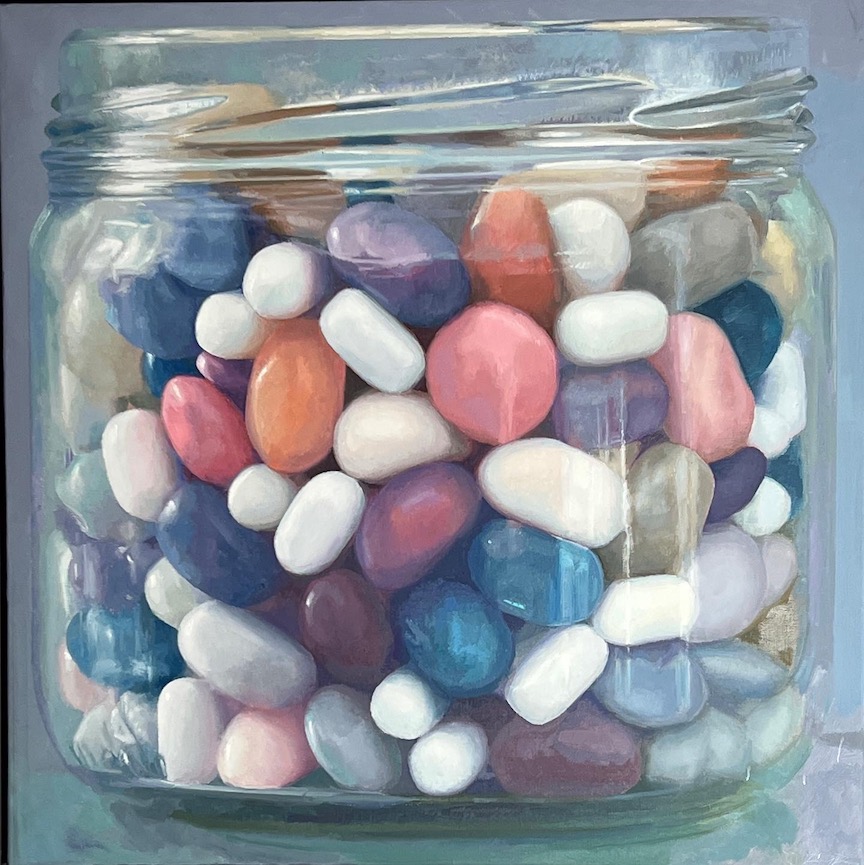
Candy Jar #13, 44×44, oil on linen, 2023
I took a break from taffy in December. It was enjoyable to return to the candy jars, and it’s been long enough that I felt the contrast in doing one of these, a distinctly different flow from the process for painting salt water taffy. The taffy presents a complex topography, a lot of wrinkles, crimps, bends, declivities, a very 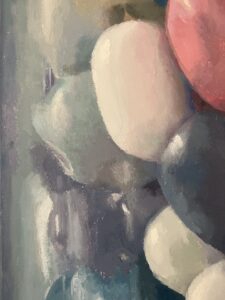 natural terrain–and feels more like portraiture, the candy having a flesh-like consistency and the waxed paper serving as drapery. Hard candy in a round jar, by comparison, feels simple and geometrical, the surfaces so much more readily rendered with flat areas of color and with detail abbreviated by brushwork. I changed the color for many of the pieces–M&Ms, jelly beans and Tic Tacs. What was key lime green became orange while purple shifted to slate blue in places, as I cooled or warmed up the hue on others. Stepping away from the painting it looks photographically precise but, up close, it’s intentionally painterly. This is actually true in some degree with most of the jar paintings. I may try another small series of these this year, but there are so many other things to work on . . .
natural terrain–and feels more like portraiture, the candy having a flesh-like consistency and the waxed paper serving as drapery. Hard candy in a round jar, by comparison, feels simple and geometrical, the surfaces so much more readily rendered with flat areas of color and with detail abbreviated by brushwork. I changed the color for many of the pieces–M&Ms, jelly beans and Tic Tacs. What was key lime green became orange while purple shifted to slate blue in places, as I cooled or warmed up the hue on others. Stepping away from the painting it looks photographically precise but, up close, it’s intentionally painterly. This is actually true in some degree with most of the jar paintings. I may try another small series of these this year, but there are so many other things to work on . . .
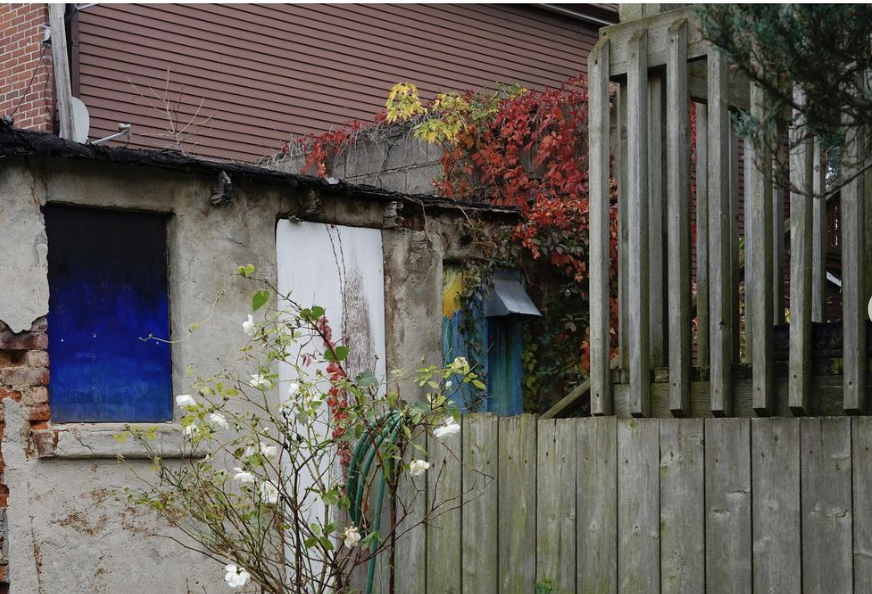
Photography by Dushka Vujovik
This is an unusually lyrical photograph for Dushka Vujovik, whose typical subjects are abstract geometric color compositions created by simply cropping what she sees in her urban environment in Toronto, just a few miles north of us down here on the bottom of Lake Ontario. When she wants to be, as a photographic coloriest, she is a rare bird. Her pallet is restrained–seriously, how much radiant color can one find on the walls of buildings in Toronto or any large city?–but somehow she discovers geometrically arranged fields of beautiful color everywhere around her. In other words she has the core skill of a creative talent: to actually see what’s there rather than what you habitually think is there. She also passes along touches of humor wherever she finds it, and her recent posts have been of the natural world. You can see her marvelous color sense here in this photograph: it’s a quiet little melody with a fine simple drum beat off to the side, courtesy of those fences. You almost can’t lose with Virginia creeper in the mix. As a representationalist obsessed with how to make color central to my work, I’m always impressed by how she achieves that with a camera. Stuart Shils was doing something like this with his camera for quite a while on Instagram. Unlike his current paintings, which are all about color, his photographs found muted abstract compositions in the real; some were black and white. He was great at it, but moved on to the incredible paintings he does now. (It takes a while to scroll down five or six years on his feed to find the photographs, he’s so prolific.) Love Vujovik’s posts. With my limited knowledge of Serbian art, she has to be my favorite Serbian artist after whoever painted the White Angel.